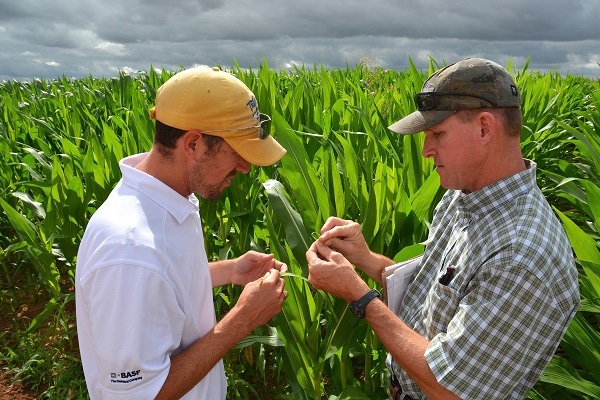June 20, 2014
1 Min Read

<p>(From left) Adam Hixson, Adam Hixson, BASF technical services representative, Lubbock, and Matt Matocha, AgriLife Extension program specialist—weed science, College Station, teamed up to present “Corn Herbicides Overlapping Residual Programs for Weed Resistance” at the 2014 Crop Tour at the Texas A&M University field laboratory near College Station. (Texas A&M AgriLife Extension Service photo by Blair Fannin)</p>
Identifying weed species is the most important factor in developing an effective weed control program for corn and cotton crops.
Understanding the weed population in a crop gives a producer information necessary to select the proper herbicide, the right rate and the correct application timing, said Matt Matocha, AgriLife Extension program specialist—weed science, College Station.
A recent field day at the Texas A&M University field laboratory near College Station showcased the latest strategies in managing problem weeds in corn and cotton. The lab serves as a research and teaching platform for Texas A&M AgriLife.
The field day was sponsored by BASF Corp. and the Texas A&M AgriLife Extension Service.
Subscribe to receive top agriculture news
Be informed daily with these free e-newsletters
You May Also Like




